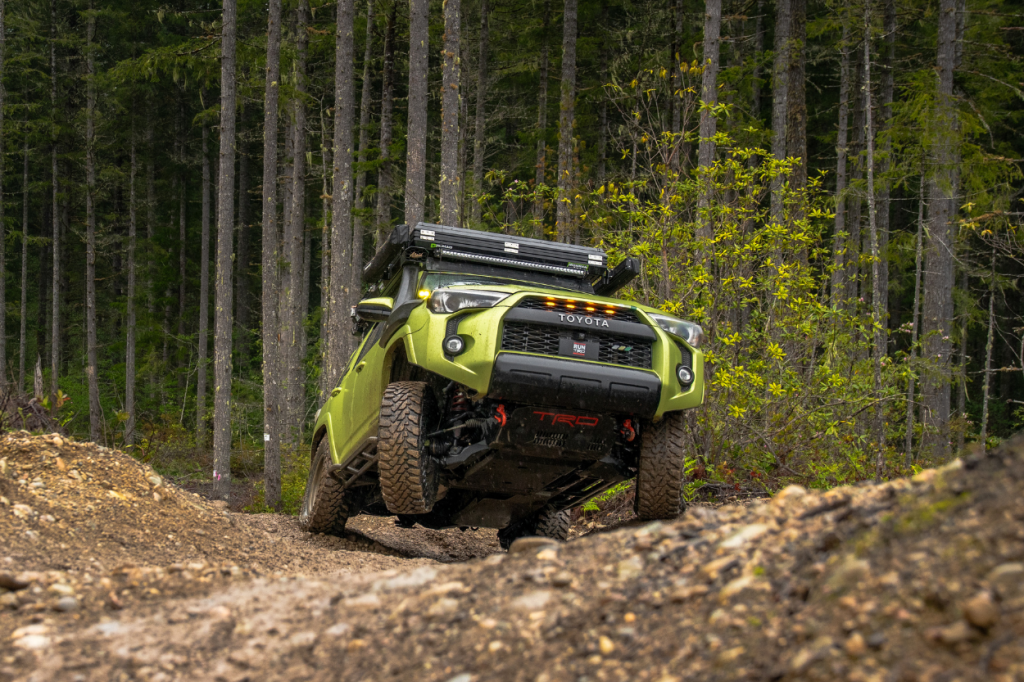
I’m sure many of you have noticed the increasing number of trail closures across the United States. Unfortunately, some of these closures stem directly from people disrespecting the land, leading to the need for protective measures.
The privilege of accessing these public lands comes with the responsibility of treading lightly and respecting the space, ensuring everyone can continue enjoying it. In today’s post, we’ll cover what it means to “tread lightly” and detail five essential ways to minimize your environmental impact while exploring.
While these don’t encompass every aspect of being a responsible overlander and off-roader, they are a good starting point for building sustainable and positive habits.
Table Of Contents
What Does “Tread Lightly” Mean?
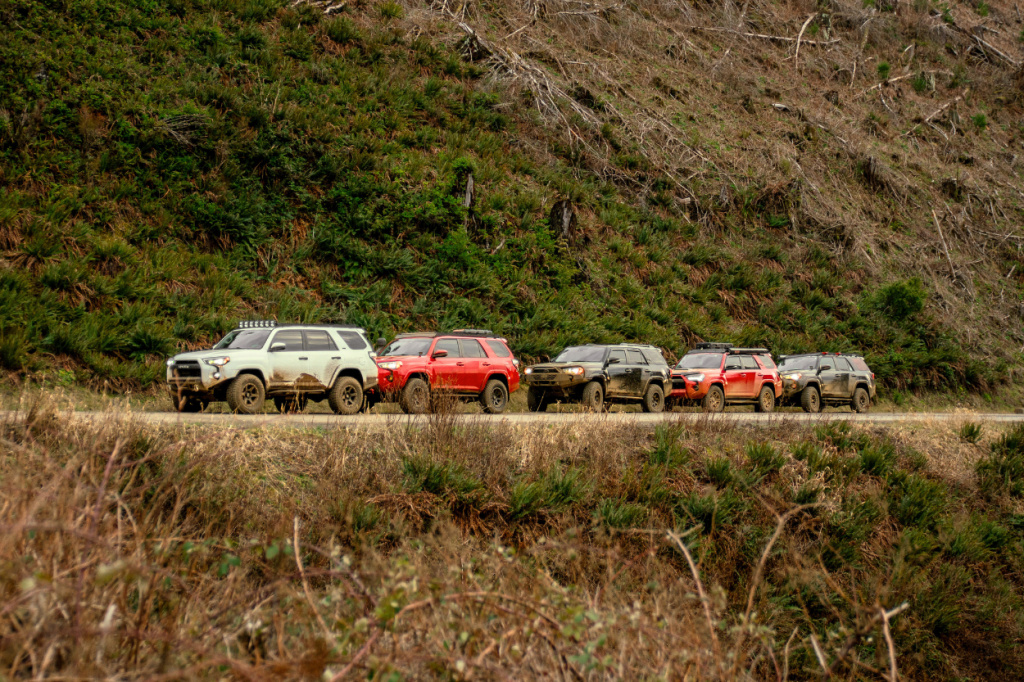
“Treading lightly” is about practicing responsible outdoor habits that reduce environmental impact. Whether hiking, camping, exploring off-road, or overlanding, it’s vital to show respect for nature and leave it as beautiful as you found it or better for the next person to enjoy.
For those looking to become more involved in the Tread Lightly movement, check out the TreadLightly! Organization. It is dedicated to promoting responsible outdoor recreation through education and protection. The organization encourages outdoor enthusiasts to minimize their environmental impact by following principles such as Leave No Trace and staying on designated trails.
By encouraging people to respect and care for the environment, TreadLightly! aims to preserve and protect outdoor spaces for future generations to enjoy.
1. Leave No Trace
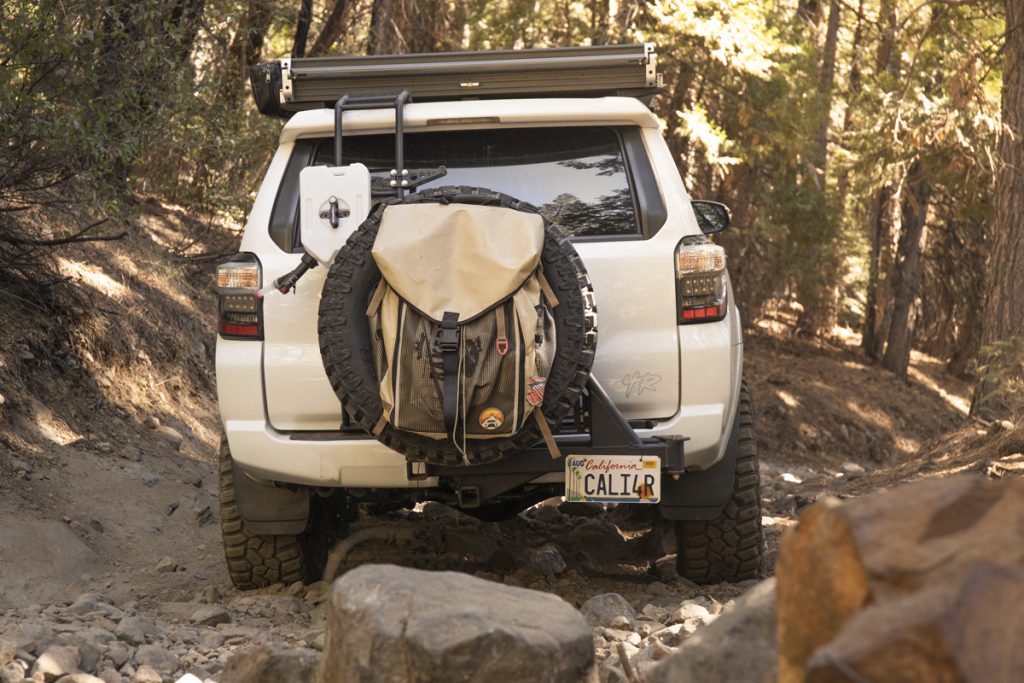
The most important tip while you’re out on the trails is to leave no trace.
What this means is to leave everything how you found it. Pack out all trash, including food scraps, shell casings, and biodegradable items. If you find any trash, do your part and pick it up. Yeah, it sucks that people leave their garbage everywhere, but taking a few minutes to clean things up will keep our trails open.
Leaving the wilderness cleaner than we found ensures that ecosystems remain intact and wildlife habitats undisturbed.
I have a reusable trash bag to store all my trash on the trails. It also closes and clips to keep the smell contained. If you have a spare tire carrier, I highly recommend getting a spare tire carrier bag for trash collection.
2. Minimize Campfire Impact
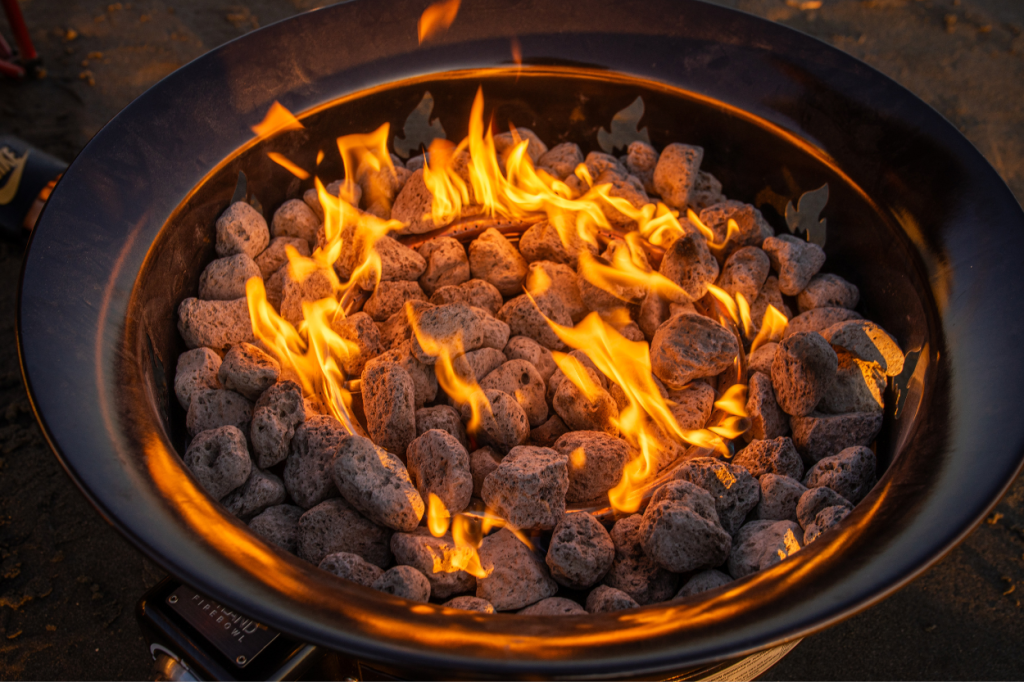
What’s camp without a campfire?
In recent years, quite a few areas have burned down because of reckless campers who don’t put out their fires. Whenever possible, always opt for a portable propane firepit that can be easily turned off. If that isn’t possible, there are a few things you can do to ensure that you are starting a fire responsibly.
Always use existing fire rings or pits and keep fires small. If there are no existing pits, find an open spot away from anything that can easily catch fire, such as trees, stumps, branches, and dense, dry grass. Only burn dead and downed wood to minimize the impact on local vegetation. Also, make sure you have all the needed supplies, a shovel, and enough water to put out the fires you start.
Per the USDA, here is some good information when you are ready to kill the fire…
First, drown the campfire with water! Next, mix the ashes and embers with soil. Scrape all partially-burned sticks and logs to make sure all the hot embers are off them. Stir the embers after they are covered with water and make sure that everything is wet.
Feel the coals, embers, and any partially-burned wood with your hands. Everything (including the rock fire ring) should be cool to the touch. Feel under the rocks to make sure no embers underneath. When you think you are done, take an extra minute and add more water. Finally, check the entire campsite for possible sparks or embers, because it only takes one to start a forest fire.
Remember…if it is too hot to touch, it is too hot to leave.
3. Use Biodegradable Products
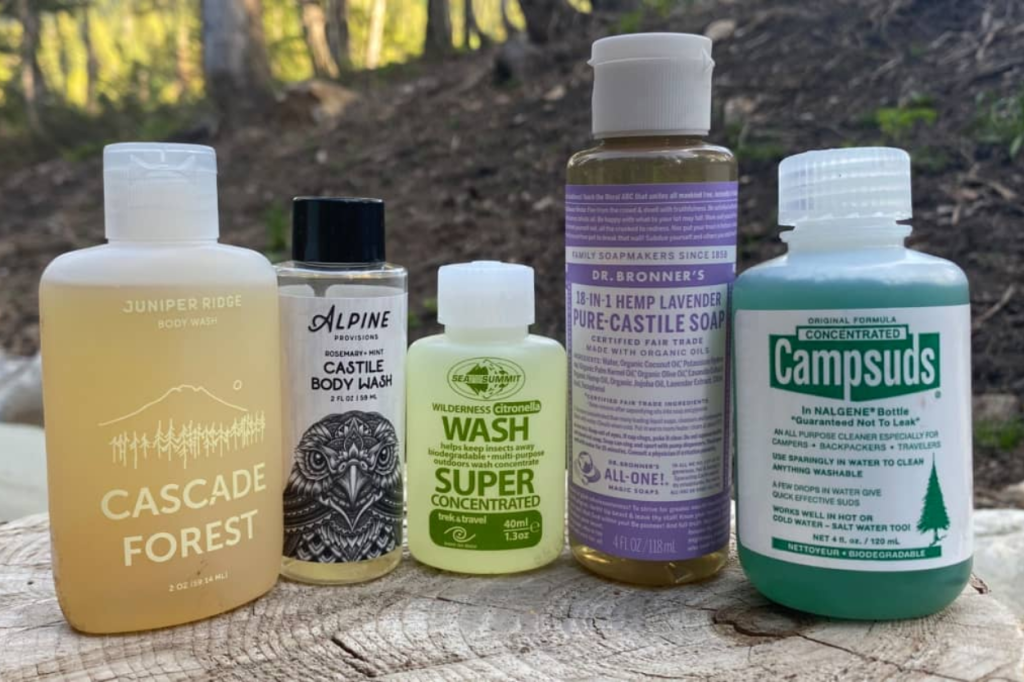
Choosing biodegradable and eco-friendly products is another way to be responsible this camping season. Opt for biodegradable soaps, toiletries, reusable containers, and eco-friendly camping equipment. Not only are they better to use out in nature, but by bringing in reusable containers, you’ll also minimize your waste.
It’s important to note that biodegradable soaps should never be used directly in a natural water source. If you want to wash anything at camp, you should be at least 200 feet away from any body of water and only use small amounts of soap. Any wastewater should also be poured into a hole 6-8 inches deep.
Always check online about burying anything. While some areas in lower elevations may permit burying things such as biodegradable toilet paper, it’s always advised to pack it out with you.
Here are a few affordable and biodegradable products:
- Sea To Summit Pocket Trek & Travel Body Wash
- Dr. Bronner’s Travel Toothpaste
- Campsuds Biodegradable Concentrated Soap
- Cleanwaste GO Anywhere Toilet Kit Waste Bag
- For any towels, always opt to bring some from home that can be carried out with you
4. Stay On Designated Trails
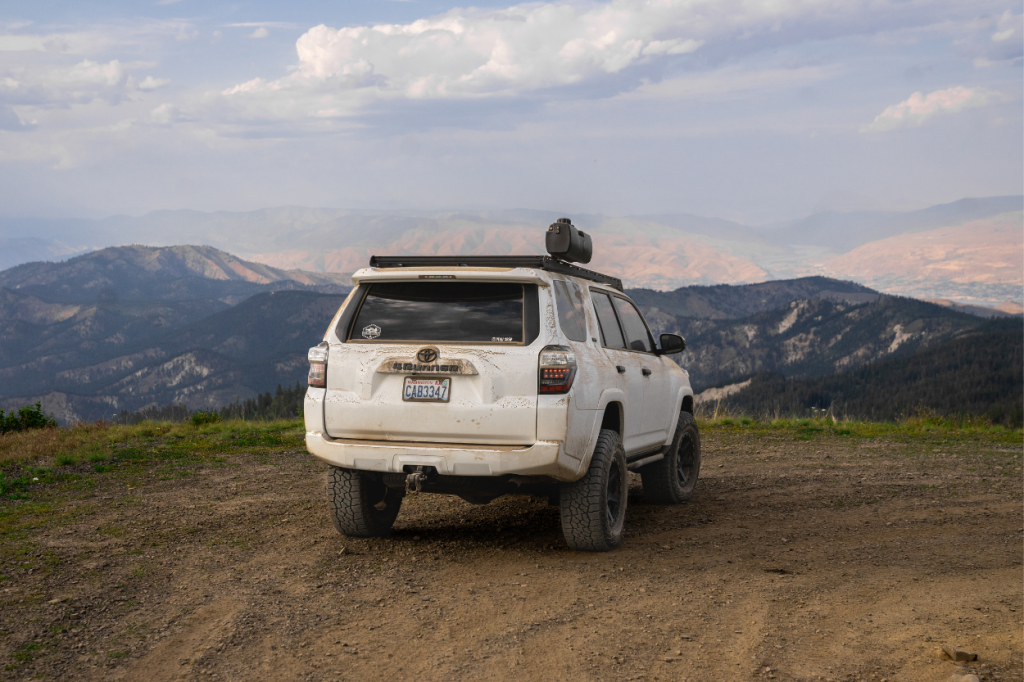
Many of us like to explore different areas to find the best views and camping spots, but a big part of that is respecting the already-established trails. This means you shouldn’t venture off of them and create new ones. It can be dangerous for you and also disturb ecosystems.
Sticking to established routes can minimize our impact and ensure that these areas remain accessible to everyone else.
Apps like Trails Offroad, Gaia, and OnX Offroad are excellent resources that provide maps and trails for those looking to explore. I recommend downloading offline maps for the areas you intend to visit to ensure you can navigate safely to your destination and stay on the marked trails.
5. Reduce Vehicle Impact
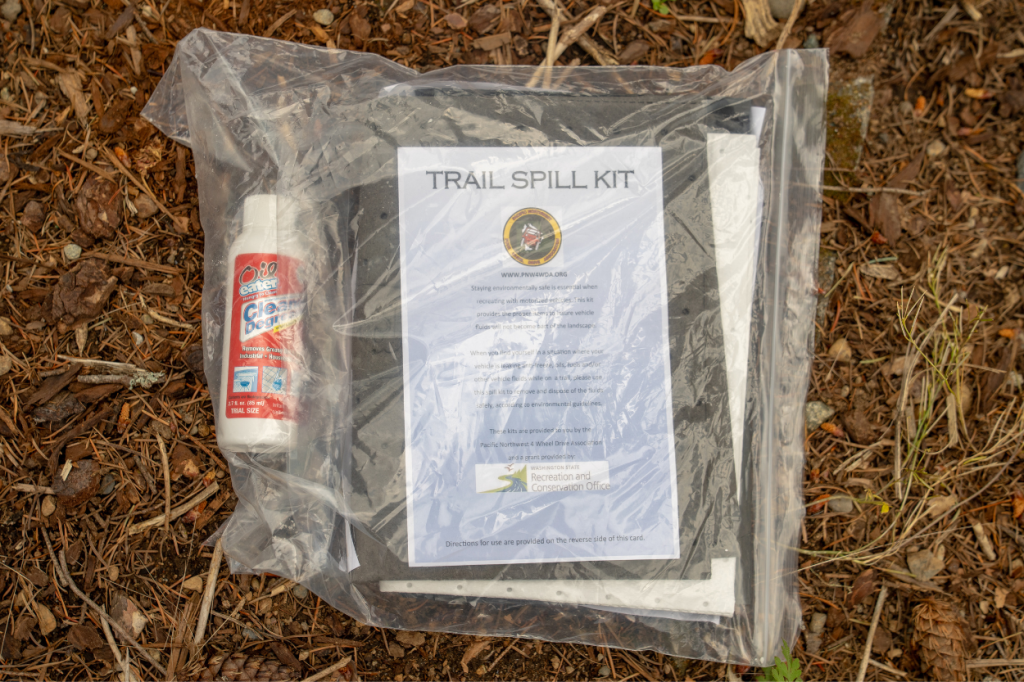
It’s no surprise that your rigs can damage the trails in many different ways. One of the easiest ways is driving recklessly at high speeds, especially over rough terrain. Avoiding excessive tire spinning or acceleration is crucial to ensuring no habitat destruction.
Another important practice is proper vehicle maintenance to reduce chemical spills that could harm the environment. At some point, everyone will need to fix something out on the trails; being prepared and having the right tools will ensure you can get back on the trails quickly. However, being prepared with the right cleanup tools is just as important.
Some good items to keep in your trail cleanup kit include:
- Small container to collect dripping fluids
- Kitty litter to absorb the liquid (PeatSorb and Oil-Dri are other alternatives)
- Paper towels and rags (Clothing can help collect any spills, too)
- Thick bags to collect any contaminated soils
Final Thoughts
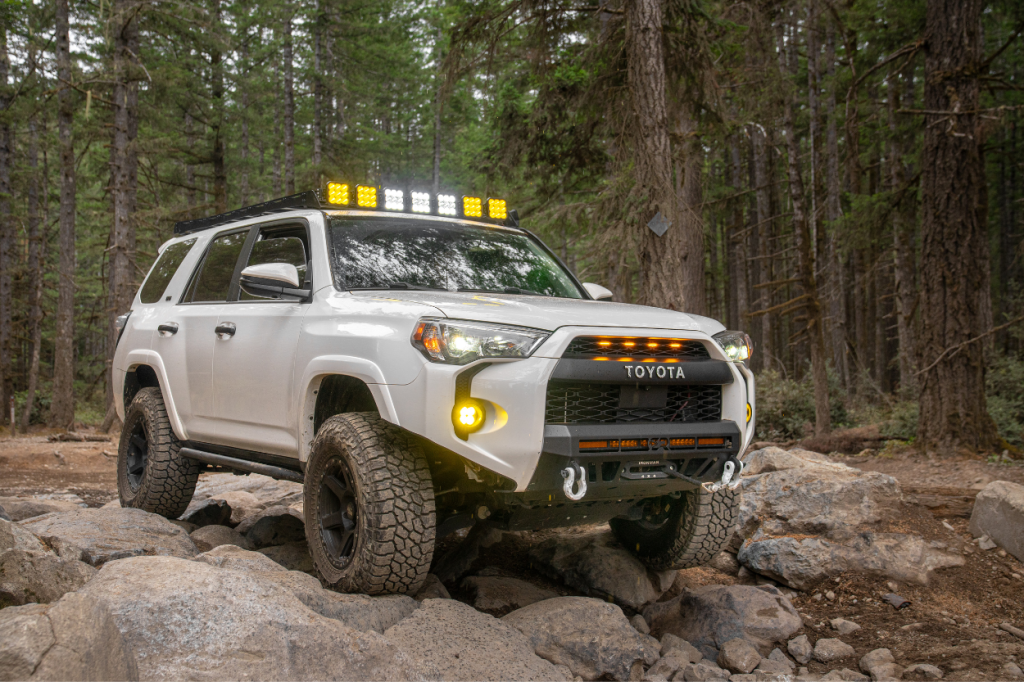
Let’s all do our part in ensuring that we leave the trails better than how we found them. Remember, every small action counts towards minimizing our impact and maintaining the integrity of our land.
I’d love to hear your thoughts. What additional practices or tips would you add to enhance the discussion on responsible overlanding?

Awesome post! This is so important for the preservation of the trails we love.
One more great thing to add is airing down your tires. This goes along with leaving no trace. Not only does airing down give you better traction and a more comfortable ride, it also reduces the impact of your vehicle on the trails. Running highway PSI on trails leads to more tire spin which creates ruts. Many of the clubs I am a part of require airing down before every run so less damage is done to the trails.
Killer post Marie!